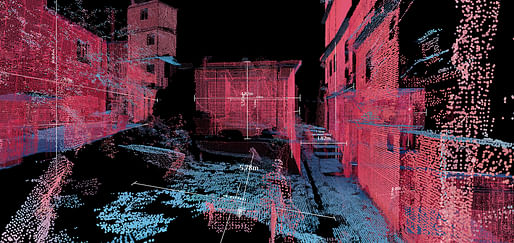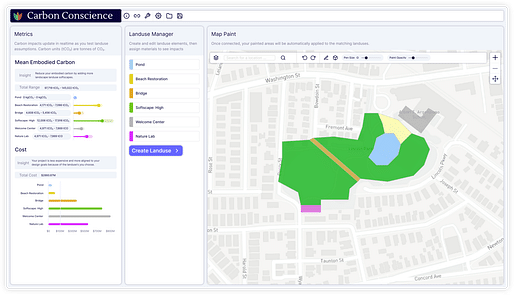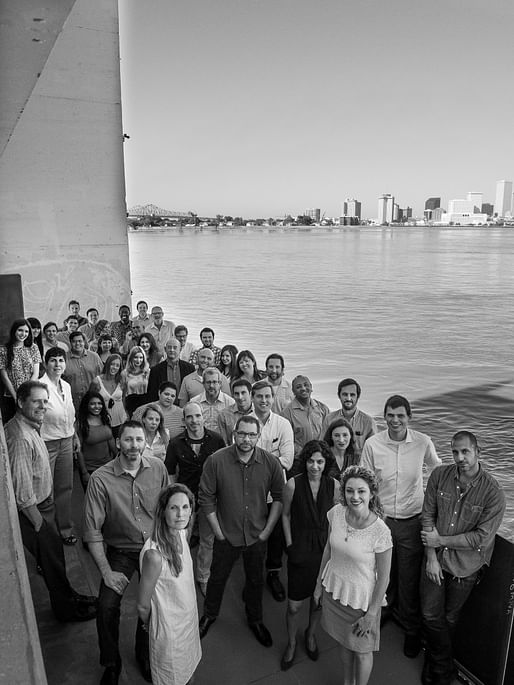

Last week, we reported on Barcelona’s mission to build a digital twin of the entire city on a supercomputer housed in a 19th century chapel. Speaking to Politco about the potential for the data-driven replica to aid Barcelona's urban development, the city’s Deputy Mayor noted: "We are in an emergency situation in which we no longer have time to make mistakes. To meet the 2030 climate goals, to be climate neutral by 2050, we have to get things right the first time around."
The digital twin project in Barcelona joins similar digital urban environments being built to replicate U.S cities including Las Vegas, Los Angeles, and Phoenix, with the Las Vegas model specifically designed to "help Las Vegas building owners transition to net-zero carbon emissions."

With the ever-increasing ability of cities to capture real-world data, from traffic behavior to air quality to informal expansion, citywide digital twin models may offer powerful future tools for architects to test how design solutions will impact their surrounding built and natural environments long before the project breaks ground.
However, while the power of digital twins lies in their ability to digest and simulate real-world data, architects are also using digital tools in a more pre-emptive way; simulating with ever-greater accuracy how design proposals themselves may perform environmentally. As we explored in a 2021 feature on the subject, architects today have access to a growing portfolio of software aimed at predicting a proposal’s embodied carbon footprint, heating and lighting levels, whole-life carbon impacts, and more.

While much of this software is designed to be as accessible as possible for maximum adoption, our feature article also explored how architecture studios are nonetheless creating specific teams dedicated towards interacting with digital tools. Within these specialized teams of software, simulations, and data interpretations, new career opportunities are emerging for architects.
“An architectural education can be hugely helpful in a career for software and interactive tools,” Sasaki Strategies lead Ken Goulding told us in the feature piece. “I’ve seen many people in our team start in an architecture background, and successfully transition into understanding and working with software.”

As an example of this trend, we are using this week’s edition of our Job Highlights series to focus on a Building Simulation Analyst position available at New Orleans-based EskewDumezRipple. Back in 2017, we spoke with the firm as part of our “How To Get A Job At ______” series, offering further insights into EskewDumezRipple’s emphasis on technology, virtual reality, and energy modelling.
The Building Simulation Analyst position currently available at the firm presents one example of how architects passionate about data and simulation modelling can place this skill at the center of their career. The role at EskewDumezRipple calls for a strong ability to use technical analysis to support sustainable design, analyzing factors such as daylight, climate, life cycle materials assessments, building assembly thermal and moisture analysis, energy modelling, and computational fluid dynamics.
“The pursuit of innovation for its own sake is antithetical to our beliefs,” the firm says. “Technology and research augment our design and delivery process, rather than the reverse.”

EskewDumezRipple’s job advertisement in full can be found over on Archinect Jobs here. Stay tuned for future curated job highlights and be sure to keep your eyes peeled for more exciting opportunities on Archinect's industry-leading job board. Recent editions of our Job Highlights series have seen career opportunities for a building scientist at Payette, computational designers at Nike, and a business development director at Waechter Architecture.
1 Comment
This is a fascinating article, and would be especially useful for cities on the seacoast, or in low lying areas that will face flooding and loss of vital infrastructure and/or loss of historic structures in the years to come. I do hope, though, that measures are taken to protect these sites from the danger of an unexpected EMP (solar flare or nuclear blast).
Block this user
Are you sure you want to block this user and hide all related comments throughout the site?
Archinect
This is your first comment on Archinect. Your comment will be visible once approved.